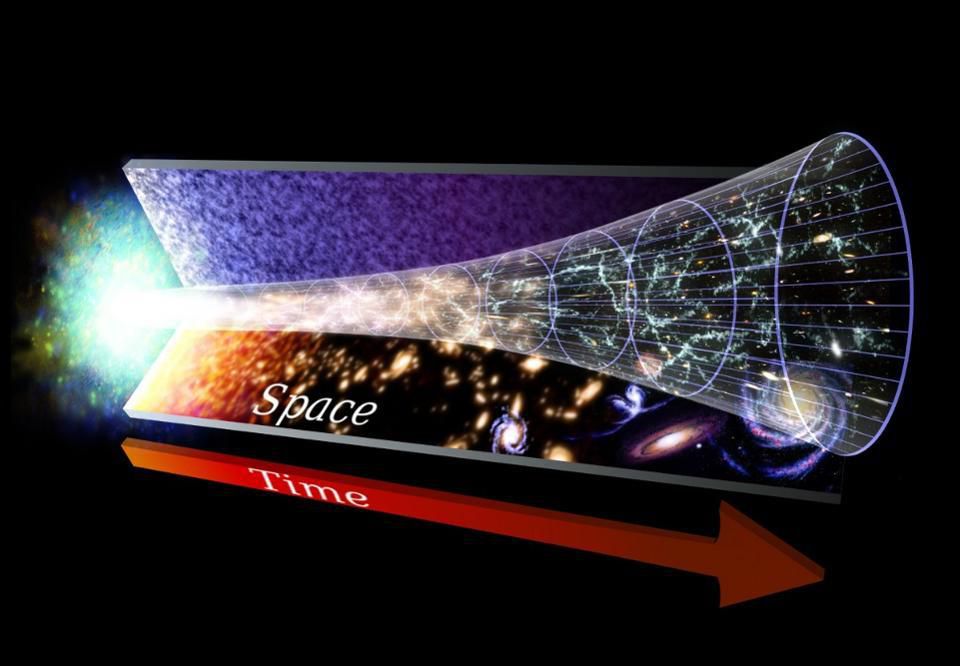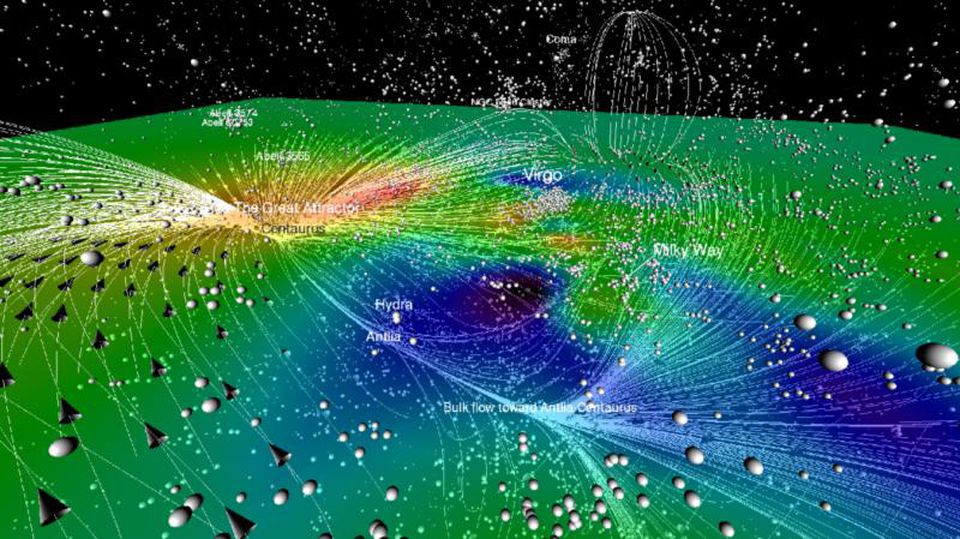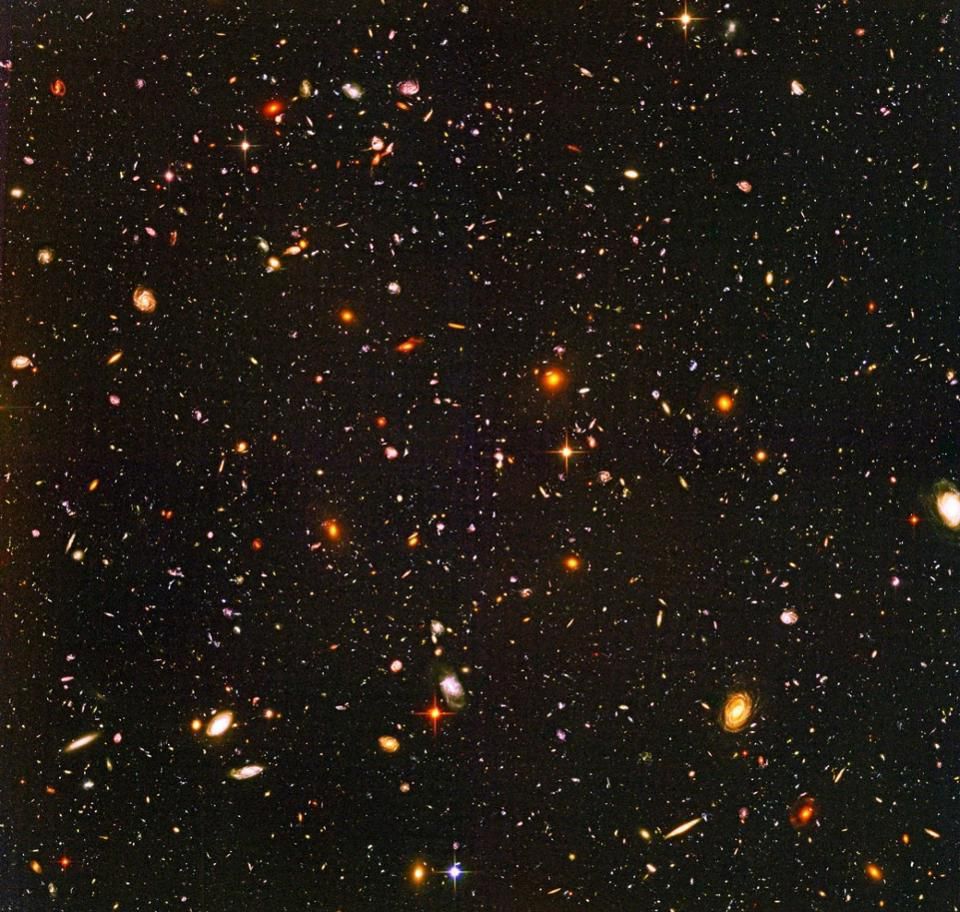Ask Ethan: how do we know that space is expanding?

There is a large set of scientific evidence supporting the picture of the expansion of the Universe and the Big Bang. But the question of the finiteness or infinity of the universe has not yet been resolved
If you look at any objects around you in the Universe, and see that they will all move away from you, what will you decide? Maybe you have a repulsive force? Or that the fabric of space expands? That you are in the center of the explosion that happened once and everything flies to the side of its center? All these and some other options may seem reasonable, but for some reason scientists all the time talk about the “expanding Universe”, as if other alternatives are no good. Why? Our reader asks about this:
How do we know that space is expanding? In relation to what? The redshift of the expanding galaxies could be in infinite space, and not necessarily in an expanding one.
The answer to this question follows directly from observations of the Universe.

The space-time near our location is curved due to the gravitational influence of the Sun and other masses.
One of the most incredible facts related to Einstein's General Theory of Relativity - the leading theory of gravity - is that it connects space-time and matter with energy. Matter and energy tell space-time how to bend; space-time tells matter how to move. If we find out how all matter and energy is distributed in the Universe at some point in time, and find out how they move, we can recreate the curvature of spacetime and its evolution during the life of the Universe.
')

A two-dimensional slice of regions of increased (red) and low (blue / black) density in our part of the universe. Lines and arrows show the direction of peculiar velocities, but it also fits into the fabric of the expanding space.
Observing the galaxies of the Universe, we see that the gravitational dynamics of other neighboring galaxies most of all influence the closest galaxies to us. The Milky Way and Andromeda are moving towards each other, other galaxies of the local group will eventually also merge with us. The rest of the galaxies are attracted to other nearby masses - large galaxies, galactic groups and clusters. In any relatively small area of space, ranging in size from a few million to tens of millions of light years, the masses of this space determine how exactly the galaxies will move.

An ultra-long shot of the universe shows how galaxies are moving away from us at extremely high speeds. At such distances, there are more galaxies, they look smaller and less developed, and move away from us with a larger redshift compared to our neighbors.
On a large scale, everything goes wrong. Small-scale movements, known as peculiar speeds , can reach several thousand kilometers per second. But they are superimposed on a stronger effect, which can only be seen on larger scales: the farther the galaxy is from us, the faster it moves away from us.

The red shift is caused not only by the removal of galaxies from us, but by the fact that the space between us and the galaxies shifts the light into the red part of the spectrum as it moves towards us from a distant point of space.
This empirical observation is known as the Hubble's law , and it postulates that the observed escape velocity of a galaxy from us is proportional to the distance from it to us. The proportionality constant is known as the Hubble constant , and it was rather accurately measured, obtaining a value of about 70 (km / s) / Mpc [66.93 ± 0.62 (km / s) / Mpc - data of 2016 / approx. transl.] with an accuracy of 3-4 (km / s) / Mpk - depends on how to measure.

The dependence of the redshift on the distance to distant galaxies. For points that do not fall on the line, the difference in speed is explained by peculiar velocities, but they are responsible only for a small deviation from the total expansion. The primary data studied by Edwin Hubble, and first used to demonstrate the expansion of the Universe, fit into the red box at the bottom left.
But why is this happening? Why does everything run away from each other if it does not have a gravitational connection? Let us return to the basics of GR, to the very revelation that Einstein experienced before publishing his most powerful idea.
By pushing his GRT, Einstein quickly realized that she had a consequence that he did not like: the Universe, universally filled with matter, would be unstable and subject to gravitational collapse. Einstein decided to correct this by introducing an invisible repulsive force that prevented collapse, a cosmological constant . Others realized that, if you do not take into account this constant, you can get the Universe, not static in time - in it the very fabric of space will expand or contract.

The analogy of the expansion of the universe on the example of a ball with coins. Separate structures (coins) do not expand, but the distances between them increase.
Einstein's fix did not work. The cosmological constant led to an unstable Universe: areas with a higher density were supposed to collapse, and with a lower density - to disperse. In the universe, working under the laws of general relativity, there could be no static space-time as long as it is filled with matter. Our universe looks homogeneous and isotropic to us. The importance of these two properties is as follows:
- Homogeneity means that the Universe is the same everywhere.
- Isotropy means that the Universe is the same in all directions.
In the complex, they say that the Universe is characterized by a uniform distribution of matter and energy, in all places and directions. And if so, and distant galaxies run away from us the faster, the farther away, we have very few options for explaining what is happening.

The universe, obeying the laws of relativity, and isotropic and homogeneous filled with matter and radiation, can not be static. It should expand or contract, depending on the content and quantity.
This situation could develop due to various factors, including:
- "Fatigue" of light coming from distant galaxies, and the loss of energy during its movement through space.
- Fast motion, as a result of which the fastest of the moving galaxies turned out to be the most distant with time.
- The initial explosion, pushing galaxies further away from us.
- Expansion of space-time.
But only the latter is confirmed by a complete set of data supporting both GR, and the astrophysical distribution and properties of all observed galaxies.

The difference between the explanation of the redshift is only through the movement of galaxies (dotted line) and the GTR predictions (continuous) for distances in the expanding Universe. Our observations uniquely coincide only with the predictions of GR.
It quickly became clear - back in the 1930s - that there can be no two options: the Universe is indeed expanding. This helped to confirm the fact that the redshift of the object very well coincided with the calculated one obtained through the distance and with the observed expansion rate, regardless of the distance to the object.
But there is more evidence. If the Universe were expanding, one would expect to observe several more phenomena. We would see that the further we look into the distant past, the denser the matter of the Universe becomes. We would see that galaxy clusters are denser than they are today. We would see that the spectrum of light from objects with properties of an absolutely black body would remain so, and did not experience a shift in energy. And we would also see that the background radiation temperature used to be higher than today's 2.7 K.

A study from 2011 (red dots) provides the best evidence to date that the background radiation temperature was higher in the past. The spectral and temperature properties of light from afar confirm the fact that we live in an expanding space.
All this evidence together teaches us that the Universe is expanding, and this is precisely the reason for the redshift. This is not a movement, not a tired light, not the result of an explosion. The space itself is expanding, and that part of the Universe that we can see and study, with time becomes more and more. And although only 13.8 billion years have passed since the Big Bang, the most distant objects from which the light reached us are now 46 billion light years away from us.

The observable part of the universe extends over 46 billion light-years in all directions from our point of view, but beyond these limits there is definitely much more space, exactly the same as ours - perhaps even an infinite amount.
And what is beyond these limits? We are almost sure that there is even more “Universe” there, but the light from there simply did not have enough time to reach us. An unobservable universe located outside the observable may be finite or infinite; we just don't know. But even if it is already infinite, it can still expand! With the expansion of the Universe, we simply multiply its size by a growth factor, so if it was originally finite, it will remain finite (just bigger in size), and if it was infinite, it will remain infinite. We are sure that the Universe is changing, expanding and stretching - and all these effects are consistent and indisputable. But what is outside the observable universe? We are working to find out. As usual, in science there is a lot more to do!
Source: https://habr.com/ru/post/374495/
All Articles